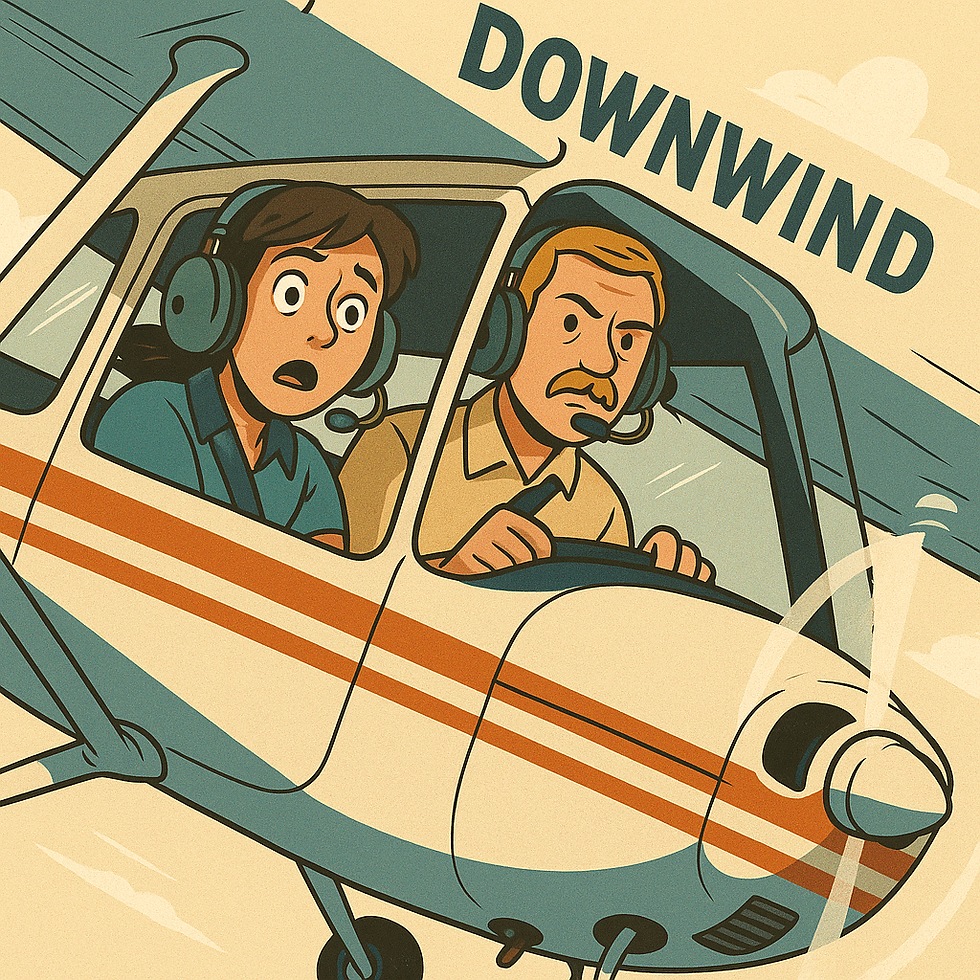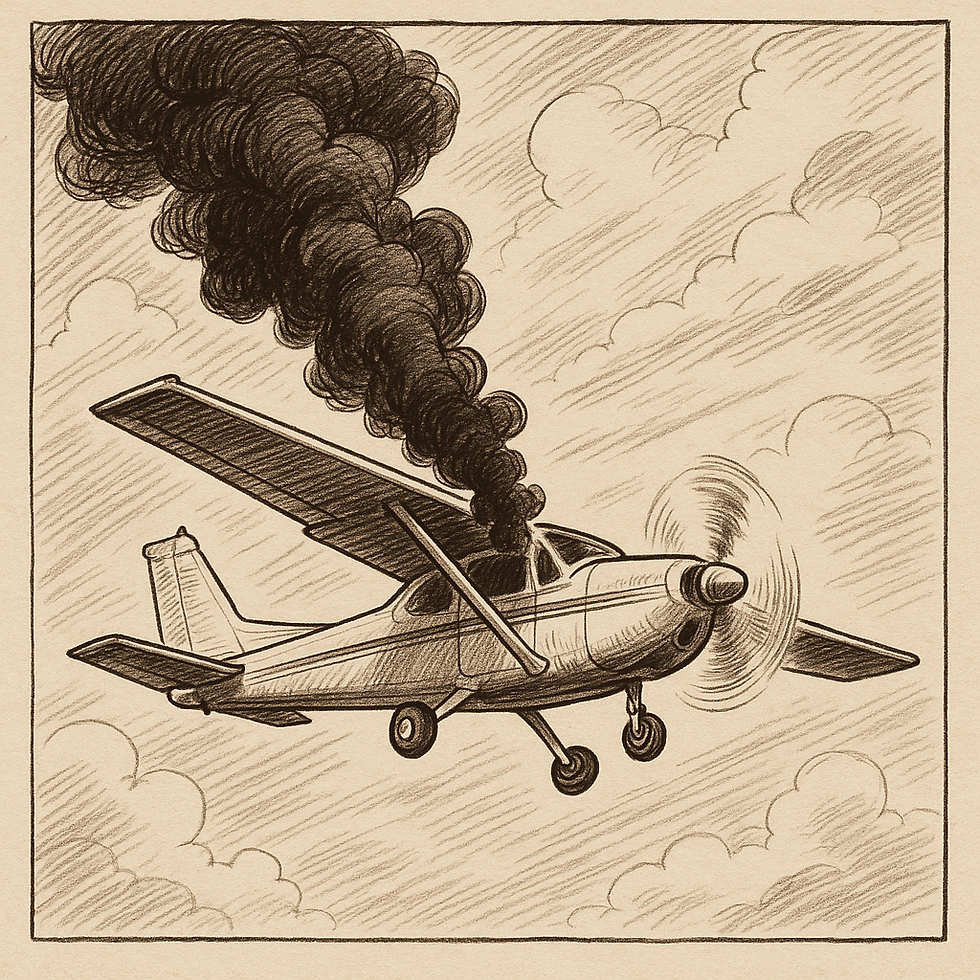“Situational Awareness: The Pilot’s Sixth Sense”
- Adam Glaysher
- Apr 29
- 3 min read
They say when a student first takes the yoke, their brain is so busy processing checklists, charts, and control inputs, they couldn’t tell you if the airplane was on fire—unless it lit their kneeboard. And I believe it. The early stages of flight training are like trying to thread a needle while walking a tightrope…in a hurricane…while someone reads you the FAR/AIM through a tin can.
Situational Awareness (SA)? It goes out the storm window right around the first radio call.
But here’s the truth, my friend: if you can’t build SA, you’ll never truly fly the airplane—you’ll only manage to survive it.

Why Situational Awareness is the Real Co-Pilot
Let me explain it like this:
When you first learned to drive, every lane change required full brain power. Now? You signal, glance, and slide over like Sinatra in a Cadillac. That’s because the simple stuff went automatic—leaving brain bandwidth to see the road ahead. That, my dear airman, is situational awareness.
In the cockpit, SA means you don’t just see your instruments—you feel the airplane. You know the weather’s building before the radar tells you. You hear tension in a controller’s voice and start planning an alternate before anyone says a word. You catch a slowing airspeed not by watching the gauge—but by hearing the wind whisper differently on the canopy.
This is the kind of awareness that keeps you ahead of the aircraft, where all the best pilots live.
Situational awareness isn’t something you study. It’s something you build. One flight at a time. One moment at a time. It’s forged by repetition, reflection, and flying often enough that you stop thinking about your feet and start thinking about the sky.
So fly regularly, fly deliberately, and remember—somewhere between the checklists and the charts, you’ve got to look up and see the big picture. Because that, my fellow ink-stained aviator, is where the good flying lives.
A pilot builds situational awareness (SA) through deliberate practice, experience, and structured habits that expand perception beyond the immediate task. Here’s how:
1. Master the Basics First
Before you can “see the big picture,” you must automate the little ones. Tasks like trimming, communicating, checklist usage, and configuring the aircraft must become second nature. This frees your brain to observe and anticipate.
2. Use the “What’s Next?” Habit
Always ask yourself:
What’s next in 30 seconds? 3 minutes? 30 miles?
This simple question keeps your mind ahead of the airplane—where SA lives.
3. Think in Terms of the Entire Flight
Don’t just fly the leg—fly the mission. Good SA includes:
Weather en route and at the destination
Fuel state
Airspace awareness
Frequencies you’ll need
Alternate plans if something changes
4. Keep Your Eyes and Ears Open
Use all your senses and sources:
Eyes: instruments, outside references, traffic
Ears: ATIS, ATC cues, engine noise
Mind: build and update your mental map of the situation
5. Practice the 5-Ts During Each Phase
Time, Turn, Twist, Throttle, Talk
This IFR procedure tool helps in VFR too—keeping the pilot mentally ahead and organized, especially during high workload phases.
6. Review and Reflect After Every Flight
Ask:
Did I miss anything?
Was I surprised by anything?
Where did my attention narrow too much?
This reflection builds the mental models that strengthen SA.
7. Chair Fly with a Big Picture Focus
When chair flying, don’t just rehearse control movements—imagine what else is happening. Picture weather building. Hear ATC reroutes. Notice fuel burn. Mental rehearsal is one of the fastest ways to grow SA.
8. Fly Frequently, Vary the Conditions
Fatigue, new airspace, marginal weather, busy radio work—all stress the system and test SA. Experience under varying conditions builds resilience and instinctive awareness.



Comments